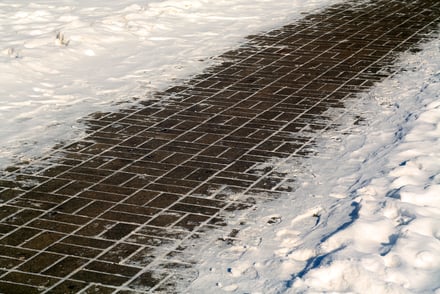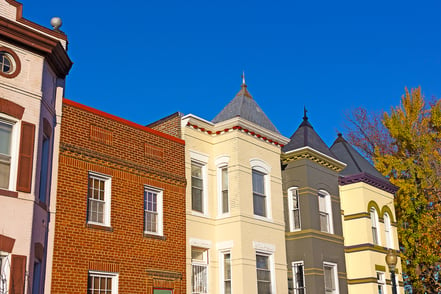Owning a historic home often comes with unique challenges, with much of the focus placed on structural integrity and repair. A not-so-uncommon problem is bubbling on plaster walls and ceiling surfaces. Blistering paint is one thing, but there may be a moisture control issue causing the interior wall bubbling. Here's how to tell the difference.
Wall Bubbling Versus Blistering Paint
Blistering paint occurs when the top coat of paint fails to adhere to the surface beneath. The surface could be plaster, but it could also be the primer. If you didn't prime the wall, it could be your new and underlying paints were different types—oil and water bases do not work together. Other non-structural reasons for blistering paint include painting over a greasy surface or painting when the conditions were too humid. Painting in direct sunlight can cause the topcoat to dry too quickly, forcing the paint underneath to bubble up. Painting with the wrong roller or stirring your paint too rapidly can introduce air bubbles that remain once the paint dries. The main takeaway from blistering paint is that the problem is at the surface, not in the underlying structure.
On the other hand, internal wall bubbling points to water penetration and is a genuine problem for owners of historic homes - especially brick homes. Unlike surface-level paint blistering, bubbling plaster is almost always a result of damp conditions, and to repair the surface, you must first locate and correct the source of the problem. Remember, the bubbling plaster may first appear like blistering paint. If blistering paint is your only sign, it is important to get down to the plaster and ensure the problem isn't structural. The plaster may feel spongy or crumble. If your plaster is crumbling beneath the paint, it is indicative of a moisture problem and needs to be addressed immediately.
Why Plaster May Bubble
With damp conditions being the leading cause of internal wall bubbling, there can be more than one factor at play, and all need to be corrected. Some of the reasons include:
- Leaks from the roof or around windows or door frames
- Moisture-wicking from the ground
- Poor attic ventilation
- Plumbing leaks
- Improper insulation between the lath and exterior brick
- Mortar damage or deterioration of the exterior brick facade
- Damaged or missing exterior brick
Fixing the Problem
If the bubbling is due to moisture coming through from outside, the exterior repairs must be completed as part of a total solution. If the interior repairs are completed but nothing is done to prevent future moisture penetration, the bubbling will happen again and it will likely spread.
Once the cause is determined, addressing the problem with the proper repair techniques - both inside and out - preserves the historical integrity of your home and ensures the problem won't reoccur.
Repair Interior Wall Bubbling
Once the damp issues are taken care of, remedying the plaster wall takes a certain amount of finesse. Plaster repair differs from drywalling and takes a lot of patience - or professionals.
- Starting in the middle of the damage, gently remove each layer of affected material, beginning with the paint and working your way through the plaster. Extend this area until the paint no longer removes easily and the plaster's integrity is intact.
- Clean the sub-surfaces and surrounding area, then seal the water damage.
- Repair the area with fresh plaster, sanding smooth, and sealing with a primer-sealer.
Leave It with the Professionals
Plaster may be attached to the lath, or it may be directly on the brick. It is not easy to remove, and it is very easy to damage the underlying structure. Repairing the problem - especially damaged brick or mortar - takes a particular set of skills and tools. Depending on your home's heritage, you may want to consider leaving the exposed brick as an architectural feature. A professional assessment and repairs by tuckpointing experts will ensure exceptional results.
If you suspect that the source of the interior damage is in your exterior brick facade, Renaissance Development can help correct the problems and return your home to showpiece condition. Get in touch with us today.
Jan 20, 2022 3:57:52 PM


